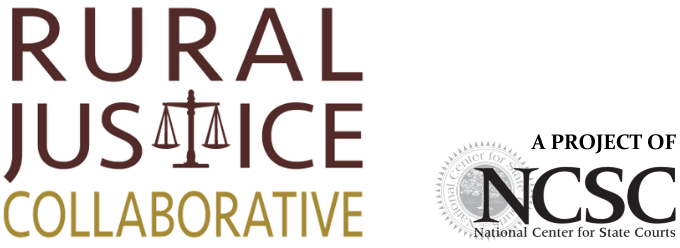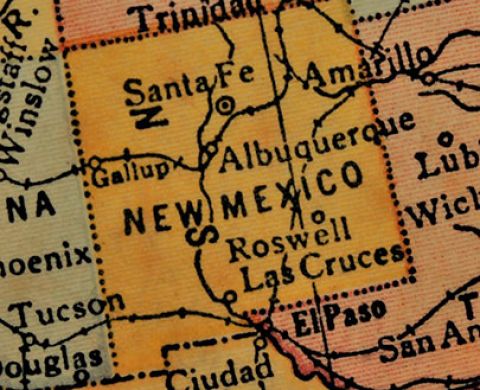Access to Justice
Nearly 20% of Americans reside in rural areas while a mere 2% of law practices in the United States are located in or serve these areas (Pruitt & Showman, 2014). There is ample documentation about the growing shortage of attorneys throughout rural America.1 As of 2020, 40% of U.S. counties had fewer than 1 lawyer per 1,000 residents (ABA, 2020). These legal deserts create disparities in access to justice within the United States (Carroll, 2017). Even federally funded nonprofit legal aid that provides free services for the poor is typically concentrated in urban areas (Runge, 2014).
Greying Rural Bar
The median age of lawyers nationwide is 47.1 (U.S. Bureau of Labor Statistics, 2020), and approximately 15% of attorneys are over the age of 65 (ABA, Profile, 2020). (In comparison, only 7% of U.S. workers overall are 65 or older.) As more attorneys in rural areas reach retirement age, there has not been a corresponding influx of young lawyers to serve those communities. The greying of the rural bar reflects the greying of rural America overall—there is a continued outmigration of younger adults from rural to metro areas. Young lawyers shy away from rural practice for a variety of reasons: concerns about finding a life partner; feeling isolated; lack of professional support; expectations of racial and gender prejudice; and lack of amenities or cultural activities (Pruitt, McKinney & Calhoun, 2015).
Economic Factors
Economic factors consistently emerge as one of the most decisive impediments to rural areas attracting attorneys. Legal practices in rural areas or small towns are often financially unviable. Attorneys have greater professional opportunities and stand to earn higher incomes in urban areas, plus the lower volume of work in rural areas can create income insecurity. Young attorneys report that the cost of a legal education and corresponding burden of student loan debt heavily influences their decision to pursue higher salaries in urban areas (Pruitt et al., 2018).
Additional Barriers
Rural populations face additional barriers which exacerbate the limited access to attorneys. To wit, the rural poverty rate as of 2017 was 16.4% (Cromartie, 2018); limited mobility or transportation options can present hurdles to procuring legal representation; and there can be technological barriers to a client’s communication with their attorney (Pruitt et al., 2018). Accordingly, the percentage of self-represented litigants in rural areas continues to grow.
Impacts
The repercussions of legal deserts are far-reaching, the end result being unequal access to justice. Ethical concerns frequently arise in small towns due to the importance of and extended network of acquaintanceships; lawyers face issues of anonymity, economic, and personal conflicts of interest. A Louisiana case where three of the county’s public defenders had worked in some capacity with the lead prosecutor’s key witness exemplifies this conundrum (Devine, 2020). In some areas, the nearest public defender or prosecutor might be hundreds of miles away, causing lengthy delays in proceedings (Runge, 2014). Public defenders serving a large rural geographic area sometimes travel circuits, thereby limiting their availability in a particular community to a specific day of the week (Runge, 2014). Lack of legal representation in civil cases can lead to critical delays for victims of domestic violence seeking restraining orders. Residents in rural areas also face a greater vulnerability to eviction. On a macro level, the absence of attorneys can inhibit economic growth in rural communities.
Sources
American Bar Association (ABA). (2020a). ABA Profile of the Legal Profession. Retrieved March 11, 2021, from https://www.americanbar.org/content/dam/aba/administrative/news/2020/07/potlp2020.pdf
American Bar Association (ABA). (2020b, August 3). Legal deserts threaten justice for all in rural America. American Bar Association News. Retrieved March 13, 2021, from https://www.americanbar.org/news/abanews/aba-news-archives/2020/08/legal-deserts-threaten-justice/
Carroll, D. (2017, March). Right to counsel services in the 50 states: An indigent defense reference guide for policymakers. Retrieved March 10, 2021, from https://www.in.gov/publicdefender/files/Right-to-Counsel-Services-in-the-50-States.pdf
Conference of State Court Administrators (COSCA). (2018). 2018 Policy Paper: Courts need to enhance access to justice in rural America.
Cromartie, J. United States Department of Agriculture. Economic Research Service (2018, November). Rural America at a Glance: 2018 Edition. Economic Information Bulletin. No. EIB-200. November 2018. https://www.ers.usda.gov/publications/pub-details/?pubid=90555 N.B. Subsequent editions also refer to the 2017 rural poverty data.
Davis, W. (2020, February 1). No Country for Rural Lawyers: Small-town attorneys still find it hard to thrive. ABA Journal. Retrieved March 12, 2021, from https://www.abajournal.com/magazine/article/no-country-for-rural-lawyers
Devine, N. (2020, November 3). Equality before the law: Ending legal deserts in rural counties.
Georgetown Journal on Poverty Law & Policy. Retrieved March 12, 2021, from https://www.law.georgetown.edu/poverty-journal/blog/equality-before-the-law-ending-legal-deserts-in-rural-counties/#_edn1
Martinez, A. (2020, September 10). What's the future for limited legal liability technicians? Law Week of Colorado. Retrieved March 13, 2021, from https://lawweekcolorado.com/2020/09/lllt-programs/
Moran, L. (July 9, 2020). How the Washington Supreme Court’s LLLT program met its demise. ABA Journal. Accessed March 12, 2021 at https://www.abajournal.com/web/article/how-washingtons-limited-license-legal-technician-program-met-its-demise
Pruitt, L. R. & Showman, B. (2014). Law stretched thin: Access to justice in rural America. South Dakota Law Review. 59 (466). UC Davis Legal Studies Research Paper No. 391, Available at SSRN: https://ssrn.com/abstract=2480748
Pruitt, L. et al. (2018). Legal deserts: a multi-state perspective on rural access to justice. Harvard Law & Policy Review 13-1.
Pruitt, L. R. McKinney, J. C. Calhoun, B. (2015). Justice in the hinterlands: Arkansas as a case study of the rural lawyer shortage and evidence-based solutions to alleviate it. University of Arkansas at Little Rock Law Review 37(4).
Rhodes, A. (2018, November 18). Legal technicians step in to fight justice gap. Law 360. https://www.law360.com/articles/1101225
Runge, R. (2014, July 1). Addressing the access to justice crisis in rural America. Human Rights Magazine 40(3). Retrieved March 11, 2021, from https://www.americanbar.org/groups/crsj/publications/human_rights_magazine_home/2014_vol_40/vol_40_no_3_poverty/access_justice_rural_america/
Endnote
1 Lisa R. Pruitt, et al., Legal Deserts: A Multi-State Perspective on Rural Access to Justice, 13 Harv. L. & Pol’y Rev. 15 (2018). https://harvardlpr.com/wp-content/uploads/sites/20/2019/04/4.-Legal-Deserts.pdf. 9 Arkansas study: Lisa R. Pruitt, et al., Justice in the Hinterlands: Arkansas as a Case Study of the Rural Lawyer Shortage and Evidence Based Solutions to Alleviate It, 37 U. Ark. Little Rock L. Rev. 573 (2015); Montana study: Hilary A. Wandler, Spreading Justice to Rural Montana: Expanding Local Legal Services in Underserved Rural Communities, 77 Mont. L. Rev. 235 (Summer 2016); Utah study: David McNeill, Measuring the Legal Services Market in Utah, Vol. 30 No. 5 Utah Bar J. 22 (Sept/Oct 2017).




